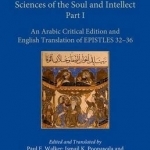Sciences of the Soul and Intellect: An Arabic Critical Edition and English Translation of Epistles 32-36: Part I
BookThis item doesn’t have any media yet
2016 | History & Politics
The Ikhwan al-Safa (Brethren of Purity), the anonymous adepts of a tenth-century esoteric fraternity based in Basra and Baghdad, hold an eminent position in the history of science and philosophy in Islam due to the wide reception and assimilation of their monumental encyclopaedia, the Rasa'il Ikhwan al-Safa (Epistles of the Brethren of Purity). This compendium contains fifty-two epistles offering synoptic accounts of the classical sciences and philosophies of the age; divided into four classificatory parts, it treats themes in mathematics, logic, natural philosophy, psychology, metaphysics, and theology, in addition to didactic fables. Epistles 32 to 36 comprise the first five treatises in the third division of the Rasa'il, on the sciences of the soul and intellect. Combining Islamic revelation with Hellenistic philosophy, the Ikhwan delineate herein their metaphysical system. Epistles 32 and 33 present adaptations of the Pythagorean doctrines, and of Neo-Platonist leitmotifs, whereby a numerical analogy is applied to the unique and transcendent God, or the One, from whom all existence emanates.
Epistle 34 takes up the pervasive theme of the correspondence between microcosm and macrocosm, situating the human being as the central link between the celestial and terrestrial realms. In Epistle 35, we find an explanation of the intellectual faculties of the individual human soul, whose ultimate aim is ascension to the timeless reality of pure intellect. Finally, Epistle 36 presents itself as the astrological epistle par excellence of the Rasa'il; from the coming-to-be of worms, to the emergence of religions and empires, nothing in the sub-lunar sphere escapes the determining influence of the celestial cycles.
Related Items:
| Published by | Oxford University Press |
| Edition | Unknown |
| ISBN | 9780198758280 |
| Language | N/A |
Images And Data Courtesy Of: Oxford University Press.
This content (including text, images, videos and other media) is published and used in accordance
with Fair Use.
